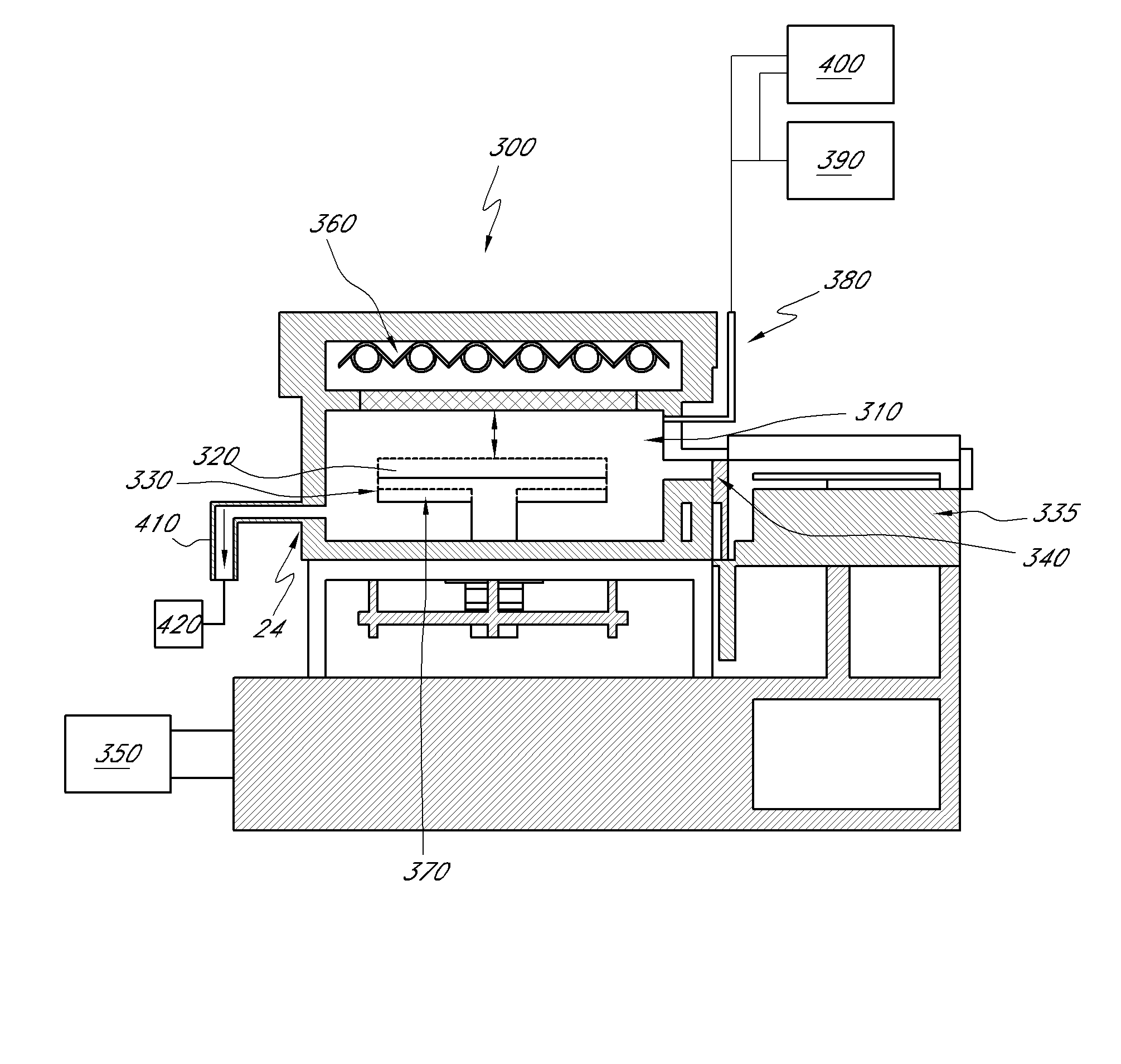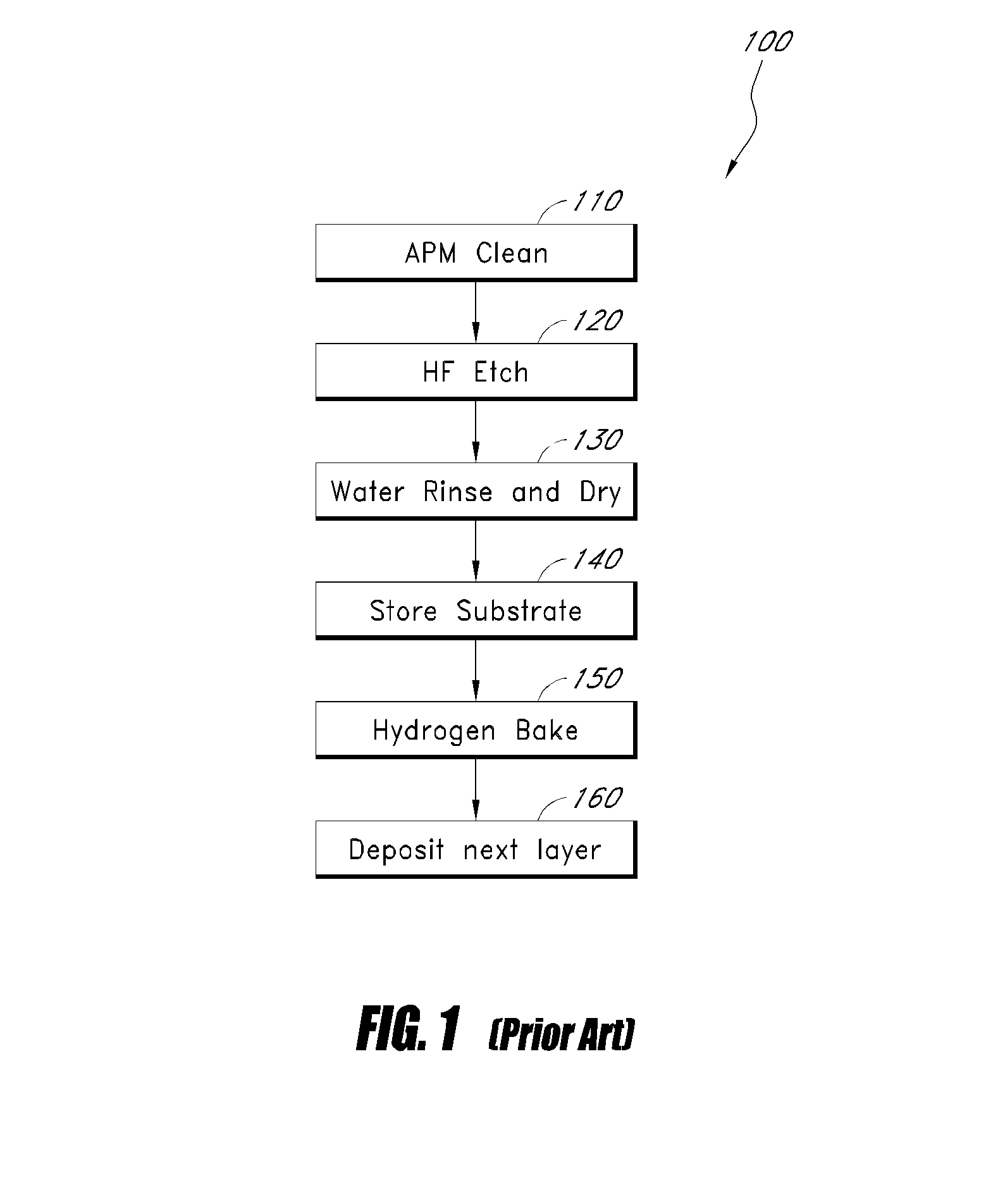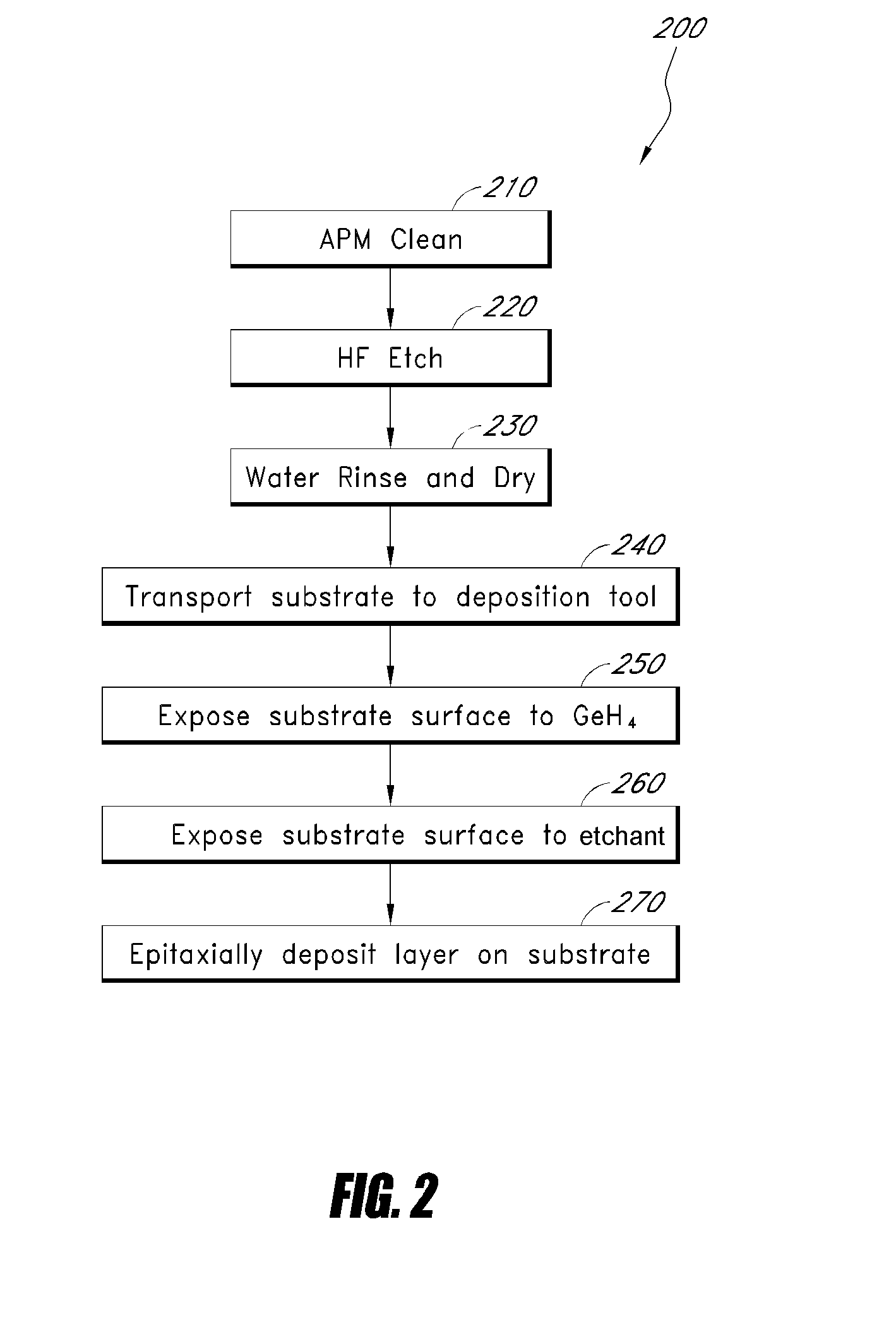In-situ pre-clean prior to epitaxy
a technology of epitaxy and pre-cleaning, applied in the field of methods for cleaning the surface of semiconductors, can solve the problems of reducing the tolerance for imperfections in semiconductor processing, reducing the size of the semiconductor, and so as to reduce heating and process time, the effect of reducing the thermal load consumed and reducing the heating and process tim
- Summary
- Abstract
- Description
- Claims
- Application Information
AI Technical Summary
Benefits of technology
Problems solved by technology
Method used
Image
Examples
example 1
[0069]FIG. 6 illustrates a Secondary Ion Mass Spectroscopy (SIMS) image of a cleaned silicon film on a substrate. The concentrations of oxygen and carbon are illustrated in atoms per cubic cm on the left y-axis and the germanium concentration is illustrated in atomic percent. The concentrations are plotted versus the depth of the sample substrate. To facilitate SIMS testing, an epitaxial silicon capping layer is deposited over the surface or film of interest to seal it for testing. Typically, the silicon capping layer is about 25 nm or thicker.
[0070]The silicon surface of the substrate was cleaned by providing GeH4 to react with native oxide present on the substrate surface, thereby forming some GeOx. Some of the GeOx compounds were removed by subsequently providing HCl. The process used to clean the interface in FIG. 6 was not optimized. Nevertheless, despite lack of optimization, the method left only approximately 8*1011 atoms per cm2 of oxygen.
[0071]The silicon capping layer for ...
example 2
[0073]FIG. 7 illustrates a SIMS image of a silicon film on a substrate cleaned by an optimized process comprising providing GeH4 and HCl.
[0074]The silicon capping layer for the sample analyzed in FIG. 7 was about 65 nm thick. The cleaned silicon surface of the sample tested in FIG. 7 is thus illustrated at a depth of about 65 nm. No spike in oxygen concentration is observed at the cleaned interface in FIG. 7. The SIMS measurement for oxygen at the cleaned silicon surface was below the lower SIMS detection limit for oxygen. Thus, the SIMS data shown in FIG. 7 indicates that substantially all of the oxygen is removed by the optimized cleaning process comprising providing GeH4 to form GeOx compounds and subsequently using HCl to remove the GeOx compounds.
[0075]Advantageously, the cleaning process used in FIG. 7 does not require a pre-epi temperature bake to remove or eliminate oxygen present on the surface of the substrate after the wet clean.
PUM
| Property | Measurement | Unit |
|---|---|---|
| temperature | aaaaa | aaaaa |
| temperature | aaaaa | aaaaa |
| temperature | aaaaa | aaaaa |
Abstract
Description
Claims
Application Information
 Login to View More
Login to View More - R&D
- Intellectual Property
- Life Sciences
- Materials
- Tech Scout
- Unparalleled Data Quality
- Higher Quality Content
- 60% Fewer Hallucinations
Browse by: Latest US Patents, China's latest patents, Technical Efficacy Thesaurus, Application Domain, Technology Topic, Popular Technical Reports.
© 2025 PatSnap. All rights reserved.Legal|Privacy policy|Modern Slavery Act Transparency Statement|Sitemap|About US| Contact US: help@patsnap.com



